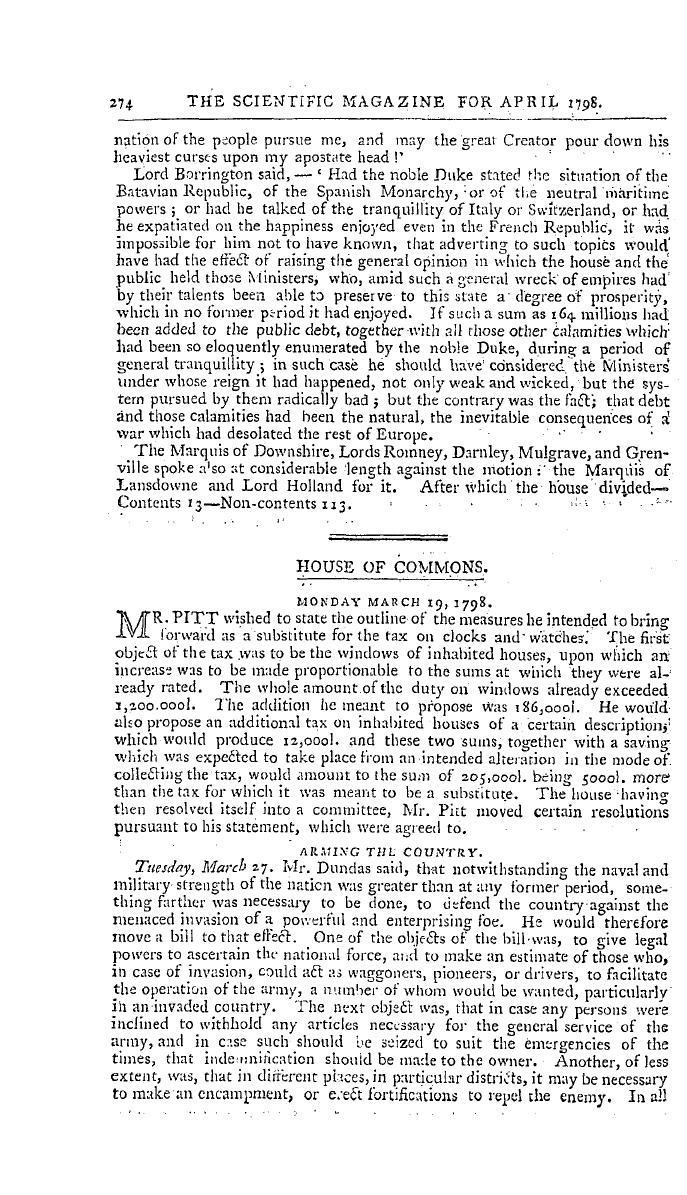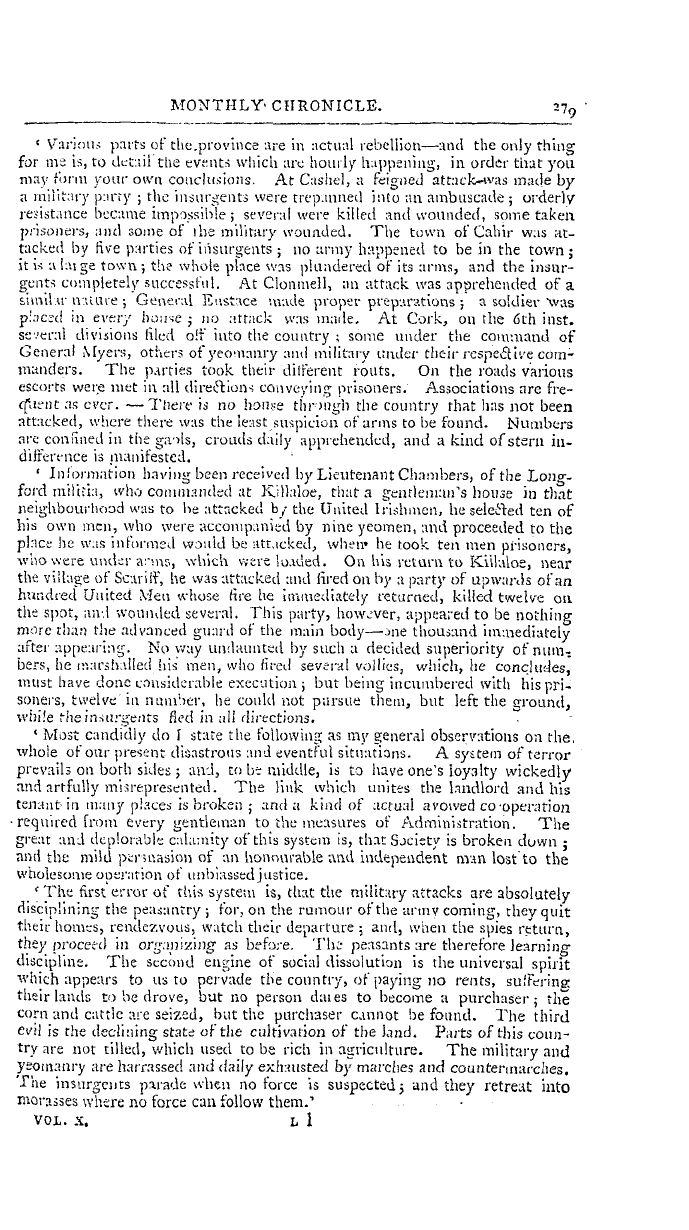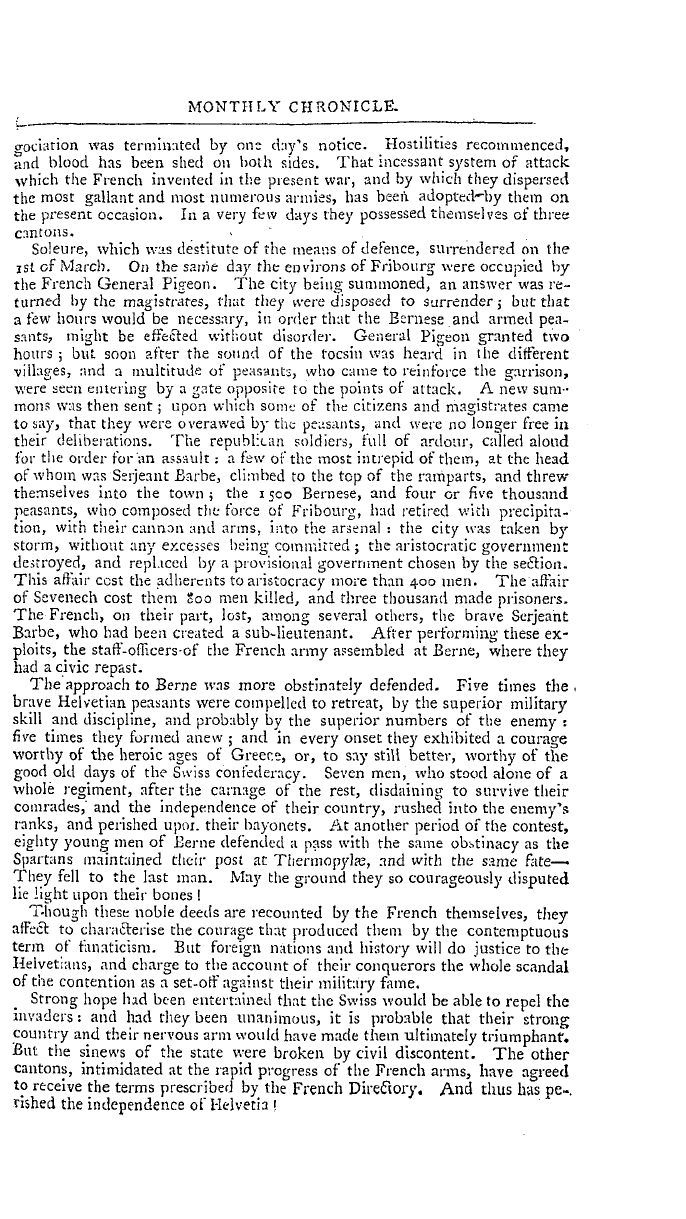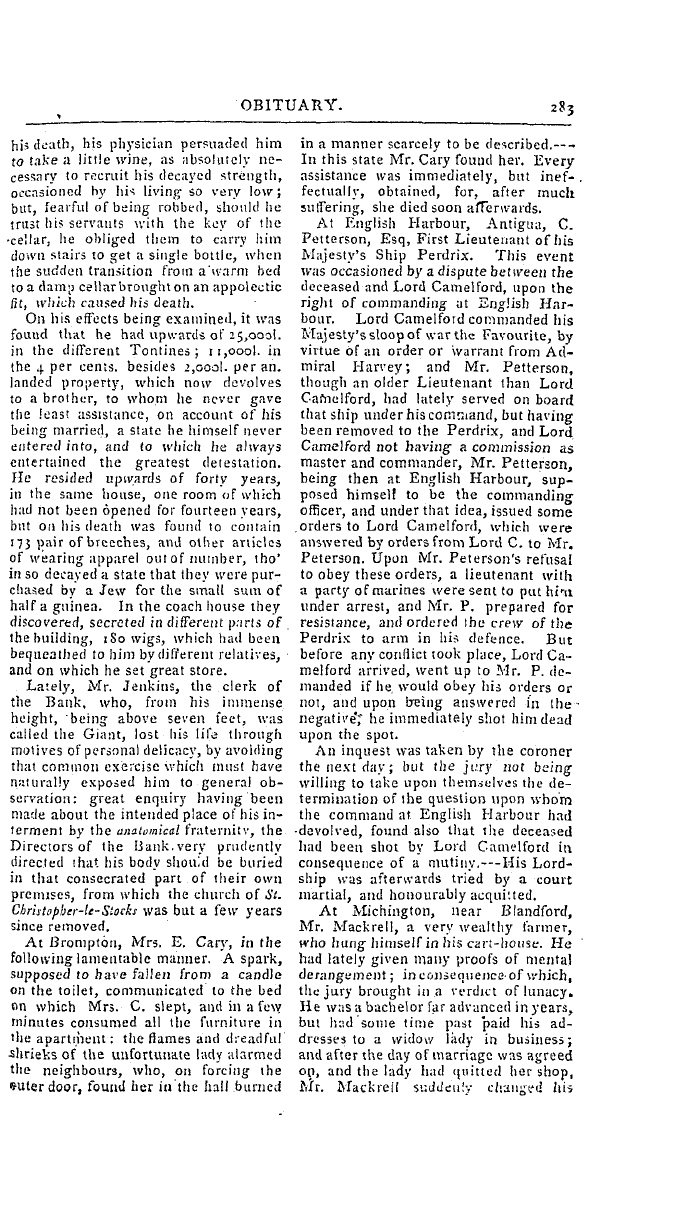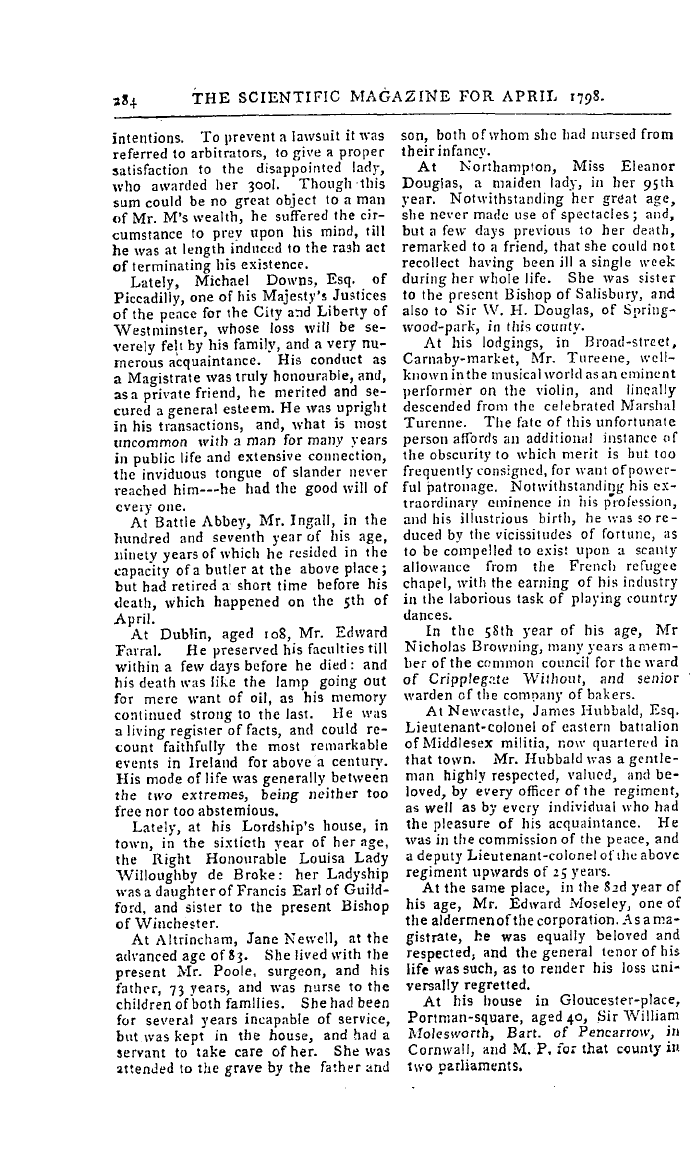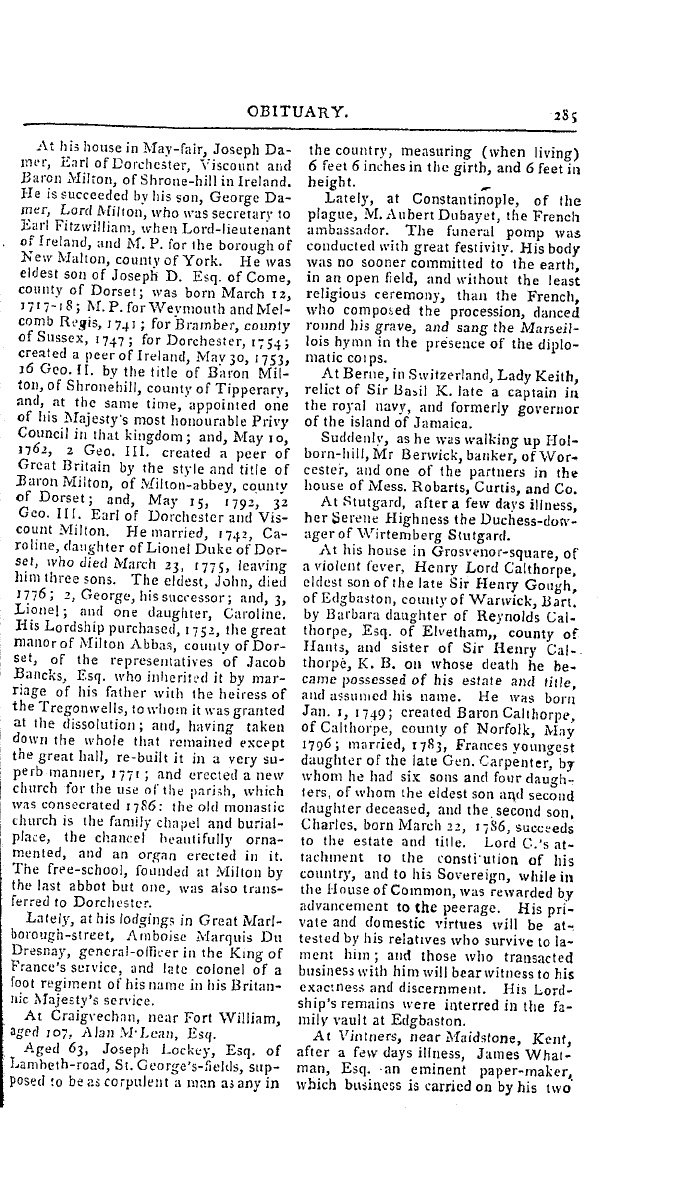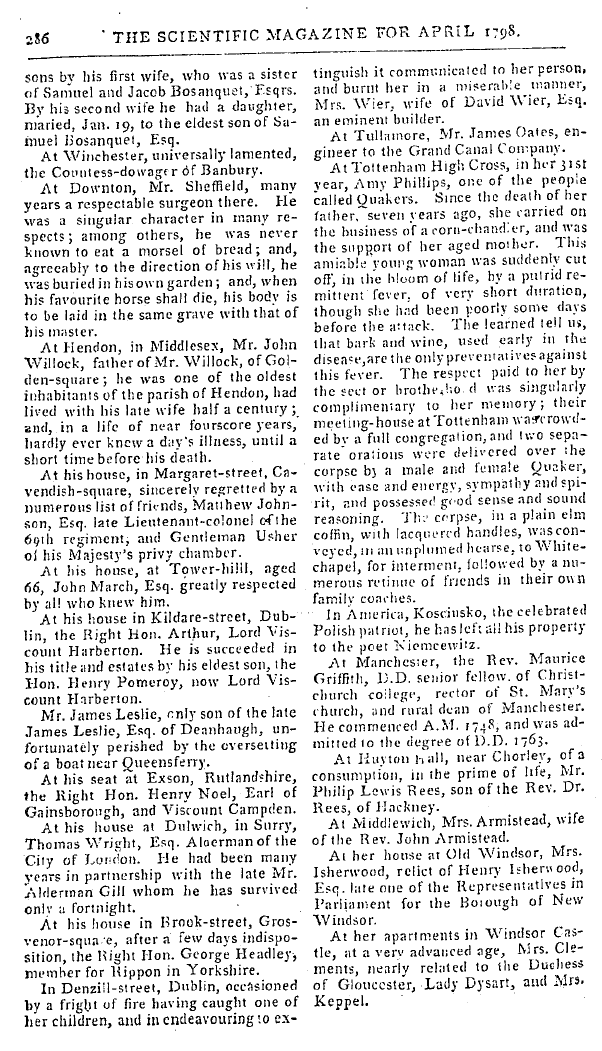Note: This text has been automatically extracted via Optical Character Recognition (OCR) software.
A Sermon;
ends are answered by a single cause , and such is in the case in thc heavens above . The earth below , though it has nothing of the splendour of thc heavens , displays another structure of an All-wise Architect . It is firm and stable in itself from its spherical figure . And its materials are such as preserve it from decay . ' God hath laid the foundations of it , and it abideth . ' If we search into its interior partswe find
, vast beds of stone , laid near enough to each other to give to the sphere of the earth the solidity of an arch : and if we examine the hi gher parts of the earth , where it presents to the eye a section or profile ; ¦ we see it is built up in stories , one above another , which lie , as they ¦ would naturally be disposed if they settled out of water ; with allusion to which the Creator is said to have ' laid the beams of his chambers
in . thc waters-. ' that is , to have formed the contignation of the solid parts of the earth in the midst of the waters . And as they are formed in , so are they established on the waters , as if the earth were a shell with waters beneath it . If the scriptures tell us that God hath ' founded it upon the seas , and prepared it upon the floods , we find ' this to be true so far as our observations extend ' . Even in this country , at the
depth of four hundred feet from the surface , we come to an arch of stone ; and when that is broken through , we meet with a body of water , which is known to extend itself for two hundred miles : how much farther we cannot say . This is a fact which has but lately appeared . In general it has been long known , that the deeper we go into the
internal parts of the earth , the more water is found ; which is ? nalagous to the strufturc of man ' s body ; where the deeper the wound , the greater is the effusion of blood . Even when the earth is broken and shattered , as it hath evidently been by different causes , the ruins of it present us with sights and prospects too grand and beautiful for the art of man to imitate , unless it be upon a very small scaleand within a very narrow compass . In
, the productions of the earth's surface we observe , in trees and in plants , another sort of building : how they are founded upon strongroots , and carried up into the air by just proportion , after the manner of the pyramid : how , when compared together , they are raised one above another into an amphitheatre . If we search how these things are done , the knowledge is too
wonderful and excellent , we cannot attain to it . But if we ask , who is the architect ? the text answers , and common sense and reason answer along with it . ' He that built all things is God . ' If we discover God in the fabric of the world , where he certainly has no competitor , we find him also at the head of the works of art , the first and greatest of which we must allow ( and we do allow it
professionally ) to have been the temple of Solomon . A design like that never entered into the heart of man . The most excellent architecture of Greece and Rome are justly supposed to have been taken from some detached parts of it . And except the Lord builtthat house , all men would have laboured in vain , had they attempted to produce anything like it . We read in the history of the Temple , that as Moses
Note: This text has been automatically extracted via Optical Character Recognition (OCR) software.
A Sermon;
ends are answered by a single cause , and such is in the case in thc heavens above . The earth below , though it has nothing of the splendour of thc heavens , displays another structure of an All-wise Architect . It is firm and stable in itself from its spherical figure . And its materials are such as preserve it from decay . ' God hath laid the foundations of it , and it abideth . ' If we search into its interior partswe find
, vast beds of stone , laid near enough to each other to give to the sphere of the earth the solidity of an arch : and if we examine the hi gher parts of the earth , where it presents to the eye a section or profile ; ¦ we see it is built up in stories , one above another , which lie , as they ¦ would naturally be disposed if they settled out of water ; with allusion to which the Creator is said to have ' laid the beams of his chambers
in . thc waters-. ' that is , to have formed the contignation of the solid parts of the earth in the midst of the waters . And as they are formed in , so are they established on the waters , as if the earth were a shell with waters beneath it . If the scriptures tell us that God hath ' founded it upon the seas , and prepared it upon the floods , we find ' this to be true so far as our observations extend ' . Even in this country , at the
depth of four hundred feet from the surface , we come to an arch of stone ; and when that is broken through , we meet with a body of water , which is known to extend itself for two hundred miles : how much farther we cannot say . This is a fact which has but lately appeared . In general it has been long known , that the deeper we go into the
internal parts of the earth , the more water is found ; which is ? nalagous to the strufturc of man ' s body ; where the deeper the wound , the greater is the effusion of blood . Even when the earth is broken and shattered , as it hath evidently been by different causes , the ruins of it present us with sights and prospects too grand and beautiful for the art of man to imitate , unless it be upon a very small scaleand within a very narrow compass . In
, the productions of the earth's surface we observe , in trees and in plants , another sort of building : how they are founded upon strongroots , and carried up into the air by just proportion , after the manner of the pyramid : how , when compared together , they are raised one above another into an amphitheatre . If we search how these things are done , the knowledge is too
wonderful and excellent , we cannot attain to it . But if we ask , who is the architect ? the text answers , and common sense and reason answer along with it . ' He that built all things is God . ' If we discover God in the fabric of the world , where he certainly has no competitor , we find him also at the head of the works of art , the first and greatest of which we must allow ( and we do allow it
professionally ) to have been the temple of Solomon . A design like that never entered into the heart of man . The most excellent architecture of Greece and Rome are justly supposed to have been taken from some detached parts of it . And except the Lord builtthat house , all men would have laboured in vain , had they attempted to produce anything like it . We read in the history of the Temple , that as Moses




























































